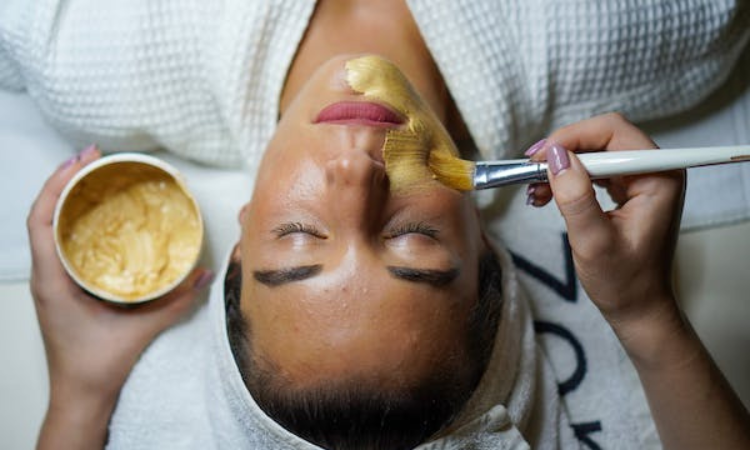Choosing the Best Antibiotic for Skin Infections – A Practical Guide
What is the Best Antibiotics for Skin Infections?
All antibiotics are created not equal, and choosing the right and Best Antibiotic for a skin infections requires careful consideration. Skin infections are a common and often bothersome ailment that can range from mild to severe. When it comes to treating these infections, best antibiotics play a crucial role in combating bacterial invaders.
Skin infections, ranging from mild impetigo to severe abscesses, are a prevalent global health concern. These infections, primarily caused by bacteria, can manifest in various forms, each requiring tailored antibiotic treatment.
In this comprehensive guide, we will delve into the intricacies of skin infections, addressing common questions and misconceptions among readers and explore the best antibiotics available for effective treatment.

Understanding Skin Infections
Before delving into the specifics of best antibiotic for skin infections, it’s essential to understand the nature of skin infections. These infections can be caused by bacteria, fungi, viruses, or parasites, with bacteria being a primary culprit. Common bacterial skin infections include cellulitis, impetigo, and folliculitis, among others.
Understanding the Diversity of Skin Infections
The realm of skin infections encompasses a wide spectrum of conditions, each with its unique characteristics and treatment requirements. Here’s a breakdown of common skin infections and their causative agents:
Impetigo: A highly contagious bacterial infection, impetigo typically presents as red sores or blisters that rupture, forming crusts. Staphylococcus aureus and Streptococcus pyogenes are the primary culprits behind this infection.
Cellulitis: This deep-seated infection involves inflammation of the skin’s connective tissues. Cellulitis is often caused by S. aureus and S. pyogenes, but other bacteria like Streptococcus pneumoniae and Escherichia coli may also be involved.
Folliculitis: Inflammation of hair follicles, often caused by S. aureus, manifests as pustules or small bumps around hair follicles.
Erysipelas: A rapidly spreading bacterial infection characterized by a raised, red, inflamed area of skin, erysipelas is caused by S. pyogenes.
Abscesses: These localized collections of pus are typically caused by S. aureus and can occur in various skin layers.
Common Myths and Misconceptions
All Antibiotics are the Same for Skin Infections
Reality: Different antibiotics target specific bacteria. While broad-spectrum antibiotics cover a wide range, targeted antibiotics are often more effective against certain strains. The choice depends on the type and severity of the infection.
Topical Antibiotics are Always Sufficient
Reality: While topical antibiotics like Neosporin are effective for minor cuts and abrasions, they might not penetrate deep enough for more severe infections. Oral antibiotics are often necessary for systemic or widespread skin issues.
Stronger Antibiotics are Always Better
Reality: The most potent antibiotics aren’t always the best choice. The right and best antibiotic depends on the specific bacteria causing the infection. Overuse of strong antibiotics can contribute to antibiotic resistance.
Antibiotics Cure All Skin Infections
Reality: Not all skin infections are bacterial, and antibiotics are ineffective against viral or fungal infections. Proper diagnosis is crucial for effective treatment.
Choosing the Best Antibiotic for Skin Infections
The choice of best antibiotic depends on various factors, including the type and severity of the infection, the patient’s medical history, and any potential allergies. Broadly speaking, best antibiotics for skin infections fall into two categories: topical and oral.

Topical Antibiotics
Topical antibiotics are applied directly to the skin and are often suitable for mild infections. They come in the form of creams, ointments, or lotions. Common topical antibiotics include:
Neosporin (Neomycin, Polymyxin B, Bacitracin): This over-the-counter ointment is effective against a broad spectrum of bacteria and is widely used for minor cuts and scrapes.
Mupirocin (Bactroban): Particularly effective against Staphylococcus aureus, mupirocin is often prescribed for impetigo and other skin infections.
Clindamycin (Cleocin): Available in both topical and oral forms, clindamycin is effective against various bacteria and is commonly used for acne and other skin conditions.

Oral Best Antibiotics
For more severe or systemic infections, oral best antibiotics are often prescribed. These medications circulate through the bloodstream, reaching the infection site throughout the body. Common oral antibiotics for skin infections include:
Cephalexin (Keflex): A first-generation cephalosporin, cephalexin is effective against a wide range of bacteria and is commonly prescribed for cellulitis.
Dicloxacillin (Dynapen): This penicillinase-resistant penicillin is effective against Staphylococcus aureus and is often used for mild to moderate skin infections.
Doxycycline: A tetracycline is the best antibiotic, doxycycline is effective against a variety of bacteria and is often used for acne, as well as more severe skin infections.
Effectiveness and Side Effects of best Antibiotics for Skin Infections
Effectiveness
The effectiveness of best antibiotics in treating skin infections is contingent upon various factors, including the type of infection, the causative bacteria, and the chosen antibiotic. Understanding the mechanism of action and the spectrum of coverage of specific antibiotics is crucial for ensuring optimal therapeutic outcomes.
Side Effects
While antibiotics are essential for treating infections, they are not without potential side effects. It’s crucial for individuals to be aware of these side effects and promptly report any adverse reactions to their healthcare providers.

Common Side Effects
Gastrointestinal Distress: Nausea, vomiting, and diarrhea are common side effects of many antibiotics. Taking the medication with food or a probiotic supplement may help alleviate these symptoms.
Allergic Reactions: Allergic reactions, ranging from mild rashes to severe anaphylaxis, can occur. Individuals with known allergies to specific antibiotics should inform their healthcare providers.
Photosensitivity: Some best antibiotics, such as doxycycline, can increase sensitivity to sunlight, leading to sunburn more easily. Sun protection measures are recommended during treatment.
Serious Side Effects
Clostridium difficile Infection: Prolonged antibiotic use can disrupt the balance of gut bacteria, leading to the overgrowth of Clostridium difficile and causing severe diarrhea.
Liver or Kidney Damage: In rare cases, certain antibiotics may cause liver or kidney damage. Monitoring liver and kidney function is essential during treatment.
Precautions
Completing the Full Course: It’s crucial to complete the full prescribed course of antibiotics to prevent antibiotic resistance.
Reporting Side Effects: Any unusual or severe side effects should be promptly reported to a healthcare provider.
Monitoring Allergies: Individuals with known allergies to antibiotics should inform their healthcare providers to avoid potential adverse reactions.
Exploring Natural Alternatives for Treating Skin Infections
While antibiotics are commonly prescribed for skin infections, some individuals may seek natural alternatives for various reasons, such as concerns about antibiotic resistance or a preference for holistic approaches. It’s important to note that natural remedies may not replace antibiotics in all cases, especially for severe infections. However, certain natural alternatives have demonstrated antimicrobial properties and may aid in supporting skin health.
Tea Tree Oil
Antimicrobial Properties: Tea tree oil has demonstrated antibacterial and antifungal properties, making it effective against various skin infections.
Application: Dilute tea tree oil with a carrier oil (such as coconut oil) and apply topically to the affected area.
Honey:
Antimicrobial and Healing Properties: Honey has natural antibacterial properties and can promote wound healing.
Application: Apply a thin layer of raw, organic honey to the affected area and cover with a sterile dressing.
Coconut Oil
Antifungal and Moisturizing Properties: Coconut oil contains lauric acid, which has antifungal properties. It also helps moisturize the skin.
Application: Apply virgin coconut oil to the affected area after cleaning.
Aloe Vera
Anti-Inflammatory and Healing Properties: Aloe vera has anti-inflammatory properties and can promote wound healing.
Application: Extract the gel from an aloe vera leaf and apply it directly to the affected skin.
Garlic
Antibacterial Properties: Garlic contains allicin, a compound with antibacterial properties.
Application: Crush a garlic clove and mix it with a carrier oil before applying to the affected area.
Turmeric
Anti-Inflammatory and Antimicrobial Properties: Turmeric contains curcumin, which has both anti-inflammatory and antimicrobial effects.
Application: Create a paste by mixing turmeric powder with water and apply it to the affected skin.
Eucalyptus Oil
Antibacterial and Anti-Inflammatory Properties: Eucalyptus oil has demonstrated antibacterial and anti-inflammatory effects.
Application: Dilute eucalyptus oil with a carrier oil and apply it to the skin.
Calendula
Anti-Inflammatory and Antimicrobial Properties: Calendula has anti-inflammatory and antimicrobial properties, making it beneficial for skin health.
Application: Use calendula ointment or cream on the affected area.
Considerations and Precautions
While best antibiotics are valuable tools in treating skin infections, it’s crucial to use them judiciously. Overuse or misuse of best antibiotics can lead to antibiotic resistance, making it harder to treat infections in the future. Patients should always complete the full course of antibiotics prescribed by their healthcare provider, even if symptoms improve before completion.
Furthermore, healthcare providers need to consider individual patient factors, such as allergies and other existing health conditions, before prescribing antibiotics. Monitoring for potential side effects is also essential to ensure the patient’s well-being.
Common Questions and Misconceptions
Can I treat skin infections with over-the-counter antibiotics?
No, self-treating skin infections with over-the-counter antibiotics is strongly discouraged. Overuse and misuse of antibiotics contribute to antibiotic resistance, rendering certain antibiotics ineffective against resistant bacteria. Consulting a healthcare professional for accurate diagnosis and appropriate antibiotic selection is essential.
Are certain antibiotics better for specific skin infections?
Yes, the choice of antibiotic depends on the type of skin infection and its severity. For instance, topical antibiotics like mupirocin or fusidic acid are often preferred for superficial infections like impetigo, while oral antibiotics like cephalexin or amoxicillin-clavulanate are commonly used for deeper infections like cellulitis.
How long should I take antibiotics for a skin infection?
The duration of antibiotic therapy varies depending on the severity of the infection and the patient’s response to treatment. Healthcare professionals will guide patients on the appropriate duration of antibiotic use, ensuring complete resolution of the infection.
Are there any precautions to consider when taking antibiotics for skin infections?
Yes, it’s crucial to inform healthcare providers about any allergies to antibiotics, underlying medical conditions, or pregnancy status. Additionally, patients should complete the entire prescribed course of antibiotics, even if symptoms improve, to prevent the infection from recurring.
Conclusion
Choosing the best antibiotic for skin infections requires a careful assessment of the type and severity of the infection, as well as individual patient factors. Whether opting for topical or oral antibiotics, the goal is to strike a balance between effectively eradicating the infection and minimizing potential side effects. As we navigate the complex world of skin infections and their treatment, a collaborative effort between healthcare providers and patients is key to achieving successful outcomes.






